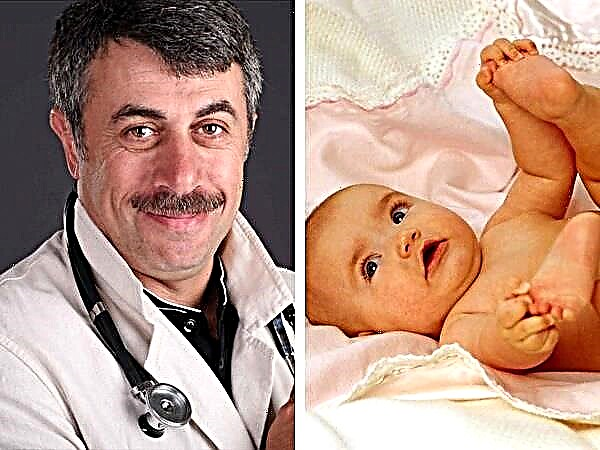Dysplasia in newborns means underdeveloped tissue and organ formation. Pathology is congenital in nature, manifests itself with impaired development of the musculoskeletal system inside the womb and the postnatal period.

DTBS in infants
What is dysplasia of the hip joints in infants (DTBS)
The muscles and ligaments of infants surrounding the hip joints are poorly developed. The femoral head is held in place by the ligaments and the cartilaginous rim that surrounds the acetabulum. Dysplasia of the hip joints in infants is accompanied by anatomical disorders: abnormal development of the acetabulum and cartilaginous rim, weakness of the ligaments.
Signs
The doctor determines the characteristic symptoms of DTBS in infants during the initial examination.
Click symptom
It manifests itself during the first 7 days of life and lasts 3 months. It is revealed as follows: the baby is laid on the back, the legs are bent at right angles. The specialist covers the inside of the joint with his thumbs, leaving the rest on the surface of the thigh. Slowly spreads the knees to the sides. If a click is heard, the hip head returns to its place. The doctor connects the baby's hips. A characteristic click informs about leaving the femoral head of the acetabulum. The clicks indicate the slipping of the lumbosacral muscle from the femoral head, the dislocation does not fall into the acetabulum.
Reducing the length of one leg
The child, placed on his back, has his knees bent and then placed on his feet. Difference in joint height indicates congenital dislocation of the hip.
Asymmetrical formation of skin folds
The doctor can check the location, the number of children's folds by straightening the legs in front and behind.
Limited hip abduction
The symptom develops in the first month of life. The knees of healthy children fit comfortably on the table up to 4 months of age. Screaming or crying indicates tension in the muscles of the child, the baby clamps the legs, not allowing the hips to be pulled apart.
Important! Indirect signs of disorders of the musculoskeletal system (torticollis, flat feet, multiple fingers) also accompany dysplasia.
Possible consequences
Launched dysplasia of the hip joints in a newborn threatens with dysfunction of the lower limbs, gait, pain in the pelvis and a high risk of disability. Early diagnosis and correct therapy will prevent complications.
Important! The earlier the diagnosis is made, the more favorable the prognosis will be.

Incorrect formation of the hip joint
Kinds
Varieties of dysplasia of the hip joints in infants:
- Acetabular dysplasia. The problem arises against the background of a violation of the development of the acetabulum. They become flatter, smaller in size. The cartilaginous rim is underdeveloped.
- Dysplasia of the thigh bones. Normally, the femoral neck is combined with the main part at a certain angle. Angle change (reduced - coxa vara or increased - coxa valga) acts as a mechanism for impaired development of the femur.
- Rotational dysplasia. It is provoked by a disturbed configuration of anatomical structures in a horizontal position. Normally, the axes of the moving joints of the lower limb do not coincide. If the misalignment of the axes exceeds the normal range, the position of the hip head relative to the acetabulum is disrupted.
It is important to seriously approach routine observation by an orthopedist - the timing of diagnosis is associated with important stages of child development. The preliminary diagnosis is made for children in the hospital. It is necessary to consult a pediatric orthopedist for 3 weeks, conduct an examination and draw up a therapy regimen. Diagnostic examinations at the age of 1, 3, 6 and 12 months will help prevent pathology. If dysplasia can be detected at 3 months of the baby's life, after a course of treatment, the working capacity of the joints will fully recover by the age of six months.
The younger the baby, the easier the therapy of disorders will be. In children under 3 months old, the joints are restored on their own when the children's legs are kept in the required position. The later the treatment is carried out, the more serious orthopedic devices are used; at 6 months, Mirzoeva's splint or Pavlik's stirrups are used.
Causes and factors for the development of dysplasia
Dysplasia in infants occurs against the background of genetic pathologies, birth and postpartum injuries, with a viral attack, hormonal factors acquired under mechanical influence. Congenital dislocation of the hip causes intrauterine disorders of fetal development, formed under the influence of endogenous and exogenous factors: heredity, gender, the influence of the hormone relaxin.

The clinical picture of dysplasia
The formation of the hip joints depends on mechanical factors that restrict the movement of the fetus and prevent normal placement in the uterus. The causes of diseases of the musculoskeletal system are multiple pregnancies, anomalies in the development of the uterus, deformity of the hip joints, oligohydramnios and polyhydramnios. Teratogenic hip dislocation is distinguished separately.
Symptoms
When dislocated, the femurs lose their main functions, the affected leg is shortened. The problem is accompanied by limited hip mobility.
Asymmetry of skin folds
Asymmetry of skin folds is most informative in infants older than 2-3 months. Notches on children's legs with congenital thigh disease occupy different levels, have excellent depth and shape. The location of the gluteal, popliteal and inguinal folds deserves special attention. On the side of the dislocation, the number of deeper pits is increased.
Important! Often, the asymmetry of the skin folds on the thigh of infants is not of diagnostic value, the symptoms are found in healthy newborns.
Knee amplitude
In most cases, parents independently notice dysplasia in newborns that this is a pathology, reports the difference in the amplitude of the legs, the height of the knees when bending. A little later (by 3-4 months), subluxation or dislocation is manifested by the inability to completely abduct the hips with bent knees, abduction is hampered by sudden muscle contraction, even in the absence of dislocation at the examination stage. The disease is characterized by the manifestation of weak clicks when the femoral head slides from the surface of the joint during flexion, reduction of the legs. These symptoms require regular monitoring.
The severity of the pathology
In most cases, children, especially those born prematurely, reveal dysplasia of both femurs, but the pathological change is determined only in one.
Pre-dislocation
1 degree of dysplasia is noted with insufficient development of the hip joints, the head of the femur remains within the acetabulum.

Types of DTBS
Subluxation
Grade 2 of the disease is accompanied by a slight displacement of the head of the bone outside the cavity during certain movements.
Dislocation
3 degree of pathology is a consequence of an underdeveloped joint. The head of the joint is completely displaced relative to the acetabulum. The problem appears in girls and is caused by a genetic disorder of the connective tissues.
Diagnosis of pathology
With the development of pathology, the help of an orthopedist is required. The doctor prescribes an ultrasound scan, X-ray or additional instrumental diagnostics. A clinical examination allows you to determine the symptoms characteristic of hip dysplasia:
- dislocation under the taut adductor muscles;
- click symptom;
- flaccid valve syndrome;
- Pelteson symptom (when flexing in the hip joint, the gluteus muscle from the side of the dislocation is drawn between the ischial tuberosity and the greater trochanter);
- Dupuytren's symptom (with pressure on the heel, the movement of the leg along the axis is determined, upward displacement);
- a symptom of gluteal muscle insufficiency;
- asymmetry of skin folds;
- shortened limb on the affected side.
The diagnosis should be confirmed by sonography or X-ray (in children under 5 months of age and older, respectively).
Treatment methods
The doctor creates a plan for the treatment of dysplasia individually, taking into account the degree of pathology, the age of the child, and additional features. For most cases, conservative methods of treatment are indicated (wide swaddling, orthopedic devices, physiotherapy, therapeutic exercises), but in the absence of the effectiveness or complexity of the disease, surgical intervention is required. After the operation, the baby is prescribed long-term treatment and rehabilitation.
Orthopedic therapy
If dysplasia is detected in the first month of life, children are recommended to swaddle widely, fixing the legs in a diluted state. Stirrups made of flexible straps are suitable for babies aged 1-9 months, which contribute to the correct fixation of the femurs. Less commonly used are spacer tires and Frejk's cushion, similar to plastic "sliders". The term of use of orthopedic devices is 1-6 months or more.

DTP treatment methods
Physiotherapy method
Physiotherapy options for therapy are varied, more often doctors recommend doing:
- Electrophoresis of calcium, phosphorus, prolonging the effect of drugs administered under the influence of galvanic current. Reduces the formation of dysplastic joints.
- UHF, causing anti-inflammatory, vasoactive and trophic effects. UHF fields generate endogenous heat in the zone of action, enhancing the lymph drainage, increasing the permeability of the vascular sections. The increased proliferation of connective tissues accelerates the maturation of the femur.
- Local exposure to a pulsed magnetic field of low frequency.
- Heat therapy with heated paraffin.
- Ultraviolet radiation treatment.
- Bioresonance vibration stimulation, restoring the biorhythmological activity of organs and tissues.
When choosing a treatment program, an orthopedist takes into account the severity of the disease.
Surgical method
Congenital dislocation of the hip is treated with a variety of surgical methods, which make up the main groups:
- open right joint;
- surgical treatment of the proximal section (corrective, detorsion-varizing);
- Hiari pelvic surgery;
- palliative therapy (Shantsa, Koenig).
For children under 1.5 years old, a closed or open right of the femoral head is carried out into the cavity. When the hip is displaced with discontinuity along the Shenton line of more than 1.5 cm, preliminary displacement of the hip head to the place of the depression by distraction is required (the “over head” technique is often used).
In children over 1.5 years of age, righting requires surgical correction of the proximal femur and acetabulum. Depending on the level of displacement of the femoral head, the question arises of one-stage or two-stage treatment. If the Shenton line is broken by 1-2 cm, the operation is performed in one action - a right without preliminary lowering of the proximal femur, combined with a shortening osteotomy of the hip bones according to Salter.
Above 2.5 cm, two-stage therapy is recommended. First of all, the doctor performs a shortening corrective osteotomy of the hip, applies the selected distraction system. After lowering the head - the adjusting correction of the roof of the cavity.

Surgical treatment of DTBS
Preventive measures
For the prevention of dysplasia, it is undesirable to swaddle children tightly - the measure interferes with the normal movement of the legs, general physical development. To carry children, it is undesirable to use a kangaroo bag - the baby's legs hang down, exerting increased stress on the joints. Slings will be the optimal solution for a modern mom.
If signs of dysplasia are found, in the first two months of a child's life, the doctor recommends spreading his legs in different directions with a Frejk pillow, conducting special gymnastics with an emphasis on circular exercises for the hips, massage.
According to the description of statistics, many children suffer from DTBS in newborns, what 5-20% of babies know this, female children get sick 5-6 times more often. The problem is widespread, but with timely detection and proper treatment, it is successfully corrected, the lack of therapy is accompanied by severe complications, and affects the quality of later life.



